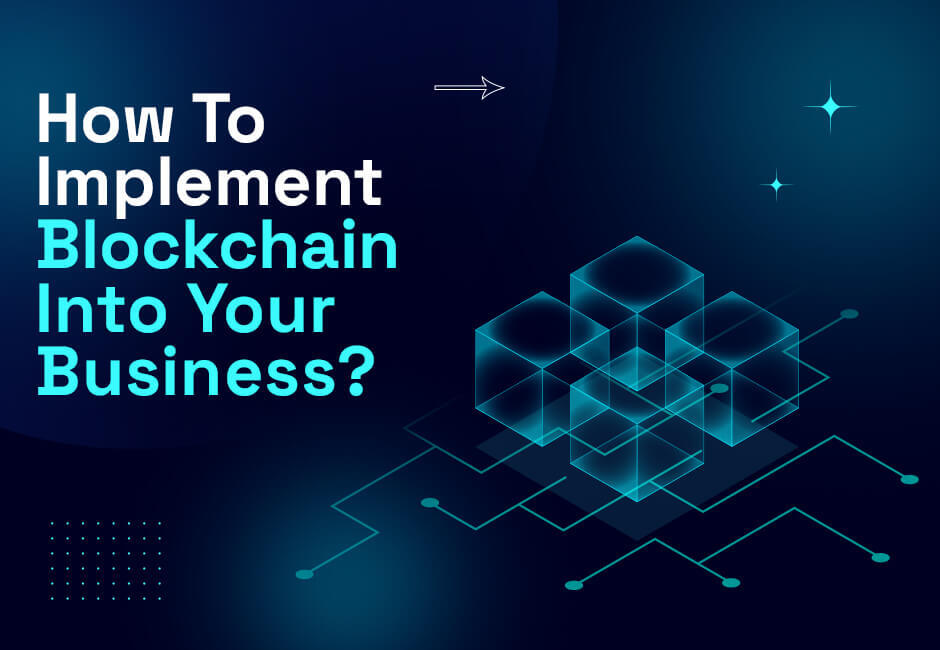
E-commerce has gained significant momentum over the last two decades, boasting a market value of $5.3 trillion and disrupting the retail sector. It has become a convenient way for users to shop for products while sitting at home. However, as the market grows, customers are also encountering more difficulties, making the pain points of E-commerce customers worse.
Slow loading speed, payment failures, confusing website navigation, poor refund policies, and cybersecurity concerns have become significant hurdles for E-commerce sites, transforming into key pain points for online shoppers. These pain points aren’t just a source of consumer frustration but a significant challenge for E-commerce businesses. Lost sales, damaged brand reputation, and unsatisfactory customer support can dent the profits from the E-commerce site.
However, the good news is that technology holds the key to fixing it. This blog will discuss tech solutions for the pain points of E-commerce customers. We will explore how innovative solutions can transform the online shopping experience for both consumers and businesses.
Top Pain Points of E-commerce Customers
While E-commerce offers a world of products at our fingertips, reality can be hit with unexpected roadblocks. Here, we have discussed the top pain points of E-commerce customers, shedding light on the accounts behind online shopping woes. Let’s get straight to the issues.
1. Slow Loading Speed
Slow loading of an E-commerce website and application can frustrate online shoppers. In a world of instant gratification, slow platforms work as an annoyance. They leave customers frustrated and clicking away, who are searching for a more seamless shopping experience. Every additional second your site takes to load, response rates drop drastically. For example, Amazon has found that every 100 milliseconds of latency results in a 1% loss in sales.
Fortunately, various solutions are available for owners to enhance their E-commerce website speed. Here are a few:
- Optimize Images For Faster Loading
Compressing image size can help dramatically increase site speeds. Also, removing unnecessary video content can optimize your website to load faster.
- Mobile Optimization
Most consumers predominantly use their smartphones to access shopping websites, highlighting the essential need for a responsive mobile website. Unoptimized mobile E-commerce experiences frustrate consumers with slow loading times, unstructured layouts, and difficult navigation. This leads to higher bounce rates and lost sales. Optimizing for mobile versions of the E-commerce website is crucial to ensure seamless browsing, faster loading, and user-friendly design, ultimately boosting conversions.
- Check for Hosting Provider
Hosting providers ensure faster website loading by offering high-performance servers, utilizing Content Delivery Networks (CDNs), implementing caching mechanisms, and maintaining top-notch data centres. Hence, it’s crucial to choose a web hosting provider who can handle all data loads easily.
- Cache Implementation
Caching stands out as a highly effective strategy for enhancing load times. By incorporating caching on your website, you can significantly diminish the time it takes for a browser to load a particular page. Additionally, since the content is already downloaded onto the user’s device, subsequent page visits will load much faster.
2. Poor Website Navigation
Poor website navigation is one of the pain points of E-commerce customers. It can cause a high bounce rate, resulting in lost opportunities. Imagine yourself clicking through complicated menus or clicking broken links. A poorly navigable website drives customers away and dents their trust in the brand. Here is how a robust E-commerce website can be designed.
- Implementing a Clear Navigation Menu
Implementing a clear navigation menu is crucial from a consumer’s perspective as it directly impacts their browsing and shopping experience on an E-commerce website. A well-structured and intuitive navigation menu makes it easier for consumers to find what they’re looking for quickly and efficiently.
- Search Bar For Overall Easy Navigation
Customers with specific queries find this feature handy, especially when navigating the site’s menu challenging. Implementing a search box feature in the app/ website helps users to navigate without going through multiple menus and getting confused easily.
- Use Breadcrumbs
Breadcrumbs offers E-commerce owners a tool to enhance their website’s usability and performance. It provides the visitor’s navigation paths and locations within the site hierarchy.
3. Inaccurate Product Filtering Results
Without product filtering options, customers may struggle to narrow down search results to find products that meet their specific needs, leading to frustration. Sometimes, the E-commerce site starts showing irrelevant products, which makes no sense at all. Here is how you can fix that:
- Incorporating faceted navigation, also known as dynamic filtering, dynamically filters the products that consumers are precisely looking for based on their search query rather than keeping them the same as static filtering.
- Enabling visual search functionality allows users to upload images or take photos of products they’re interested in, with AI-powered algorithms capable of recognizing and matching similar items in the catalogue.
4. Payments Related Issues
E-commerce has revolutionized shopping, offering convenience and a vast selection of products at our fingertips. However, due to payment-related issues, the checkout process can become a hurdle for many consumers. These problems can disrupt a smooth shopping experience and lead to cart abandonment. Any payment-related issues in an E-commerce website/app can pose problems for both buyers and businesses.
For buyers, issues like payment failures or delayed refunds can lead to frustration and trust issues, potentially resulting in leaving transactions. This is one of the major pain points of E-commerce customers that consumers often face. For businesses, these problems can mean revenue loss and damage to their reputation. Addressing payment issues is essential for a smooth E-commerce experience for all parties involved. Here is how they can fix payment-related issues in E-commerce websites/apps using technology.
- Implement A Variety of Payment Options
When it comes to shopping online, customers want a hassle-free payment process. For example, a site catering to a global audience must offer a wider range of options to cater to diverse customer preferences.
The right way to approach this is to understand the payment methods your customers want. For instance, a consumer in the US might prefer ApplePay, PayPal, or a Credit Card, while an Indian consumer will prefer UPI. This is crucial as payment preferences vary significantly across geographic regions.
- Ensuring A Secure Checkout Process
Online shoppers are often concerned about the security of their personal and credit card information, fearing potential data breaches. E-commerce platforms can implement a highly secure checkout system to resolve these issues. E-commerce websites or apps should implement SSL certificates, two-factor authentication, and PCI DSS compliance to ensure everything stays safe.
- Ensuring a Working Payment Gateway
Payment gateway errors can lead to payment failures when you’re trying to buy online. These issues can frustrate users, resulting in lost sales. This is why you should integrate a top-notch working payment gateway with a high success rate.
5. Lack Of Personalization
The absence of personalization in E-commerce can lead to missed opportunities and diminished customer engagement. Users may feel less connected to the platform without a tailored shopping experience that fits individual preferences. This results in decreased customer satisfaction and loyalty. Here is how you can overcome personalization challenges with the help of technology.
- Product Recommendation: Using advanced algorithms, entrepreneurs can analyze user behaviour, purchase history, and preferences to suggest personalized product recommendations.
- Predictive Analytics: By utilizing predictive analytics, entrepreneurs can forecast customer behaviour and preferences, enabling proactive personalization strategies such as inventory management, pricing optimization, and targeted marketing campaigns as needed.
- Integrating Augmented Reality (AR) and Virtual Reality (VR): By integrating AR and VR technologies to offer immersive shopping experiences, allowing customers to visualize products in their environment or try virtual fitting rooms for apparel and accessories.
6. Lack of Mobile Responsiveness
Most consumers predominantly use their smartphones to access shopping websites, highlighting the essential need for a responsive mobile website. If your website hasn’t been optimized for mobile screens, navigating through a mobile device can be frustrating.
Small text sizes, overlapping web elements, similar color schemes, and undersized buttons on websites or apps can present navigation challenges. The lack of mobile responsiveness for an E-commerce consumer can frustrate users who browse E-commerce sites from handheld devices. This is one of the challenging pain points for e-commerce customers.
How To Fix?
Here is how you can improve the mobile responsiveness issues of an E-commerce website:
- Responsive Web Design (RWD):
This is the most common approach you can opt for, where the website’s code automatically adjusts the layout and elements based on the device accessing it. This ensures a seamless experience across desktops, tablets, and smartphones.
- Adaptive Web Design (AWD):
AWD creates separate layouts for different screen sizes, offering a more optimized experience for each device type.
- Server-Side Rendering (SSR):
This approach renders the website on the server instead of the browser for each user request, delivering a fully functional web page optimized for the specific device.
7. Inefficient Customer Support
Inefficient customer support post-sales is one of the prevalent causes of customer frustration with online retailers. It can lead to discontinued purchases and harm brand reputation. So, it’s really important that when customers need help they can easily connect to customer support.
Here are a few ways that you can follow to resolve this issue:
- Multiple Points of Contact
E-commerce businesses should offer customers multiple communication options like email, phone, and live chat. This ensures clients can reach out for support whenever it suits them best.
- Integrate AI Chatbot For Instant Resolution
Integrating AI-powered chatbots into the support section for quick customer assistance is a good & fast way to deal with customer queries. They excel at helping with common questions and resolutions. The best part about the AI chatbots is they can work round the clock.
8. Cart Abandonment By Consumers
Often, customers leave their carts because they can’t get the item because the item is out of stock, face slow shipping, or find the checkout confusing. Here is how cart E-commerce entrepreneurs can fix the cart abandonment issue by consumers.
- Simplify The Checkout Process
Make your checkout process smooth by keeping it short with just 3-5 steps. Provide clear navigation and an option for guest checkout without signing up. Keep payment on one page to avoid extra steps from bank redirects and other details.
- Display Transparent Pricing
To keep pricing transparent, your website must show all costs upfront, including taxes, shipping fees, surge fees, and additional charges, to avoid surprises at checkout.
- Send Reminder Email/ App Notifications
Customers may often get interrupted by a phone call or other distractions, leading them to forget about their intended purchases. It’s crucial to send reminder emails or app notifications to potential consumers about the items they are looking for.
- Sending Pop-Up Before They Close The Website
Often, consumers browse extensively, adding items to their favorites list, and then resume browsing, resulting in confusion and potential cart abandonment. Addressing this issue can be achieved by prompting a pop-up asking whether they wish to proceed to checkout or close the page.
9. Server Overload/ Site Crash
E-commerce websites often face high traffic, especially during events like Black Friday sales. This server overload can cause a slowdown of the website or a site crash. This situation can frustrate the users and cause them to leave the site before purchasing.
Technical Resolution
However, it’s not very tough to handle when there are many tech solutions. Several strategies can be implemented to address server load issues and improve website performance. A few of them are:
- Server Optimization: Fine-tuning server settings can improve resource allocation and efficiency. This involves optimizing database queries, caching frequently accessed data, and configuring server memory usage. These steps free up site bandwidth and help the site handle more load.
- Upgrade Server Hardware: If the existing server cannot handle the increasing load, you should consider upgrading to a more powerful server with increased processing power, memory, and storage capacity if needed.
- Content Delivery Networks (CDNs): CDNs distribute website content across geographically dispersed servers. This reduces the distance data needs to travel, leading to faster loading times for users in different locations.
- Load Balancing: Distributing traffic across multiple servers using load balancers ensures no single server gets overwhelmed, preventing overload and crashes.
10. Overlooking E-commerce Cybersecurity
Owning an E-commerce website and ignoring its security is similar to keeping your shop open without any attendant. Hackers can exploit vulnerabilities to steal sensitive customer data like credit card information and personally identifiable information (PII). This can lead to financial losses due to fraudulent charges, fines for non-compliance with data protection regulations, and potential lawsuits.
Also, cybercriminals can lock you out of your website and data by encrypting it and demanding a ransom payment to restore access. This can disrupt your business operations, lead to lost sales, and damage your brand reputation. Once reputation is lost, it will result in lost customer trust. This can lead to a situation where the consumer may abandon your website and take their business elsewhere. This can significantly damage your sales and create negative publicity around your brand.
Technical Resolution To The Issue:
- Secure Hosting: Choosing a reputable web hosting provider with security features like firewalls, intrusion detection systems, and malware scanning to protect your website from external threats.
- Regular Backups: Regularly back up your website data to a secure location. This allows you to recover your data and restore your website quickly in case of any cyberattack.
- Regular Patching and Updates: Keep your website software, plugins, and content management system (CMS) updated with the latest security patches to address known vulnerabilities.
- Strong Passwords: Enforcing strong password policies for user accounts, including minimum password length, complexity requirements, and regular password changes.
- Multi-Factor Authentication (MFA): Implementing MFA for critical accounts and sensitive operations and adding an extra layer of security beyond just passwords can help you tackle password attacks.
- Data Encryption: Encrypting sensitive customer data like credit card information to protect it from unauthorized access, even if it’s compromised.
- Security Monitoring Tools: Utilizing security monitoring tools to detect suspicious activity on your website and systems in real-time, allowing timely responses to potential threats.
- Regular Bug Testing: Conduct regular bug testing to identify and address bugs in your website and systems before attackers can exploit them.
How Logic Square Technologies Can Solve Your E-commerce Pain Points?
As an E-commerce development company, Logic Square Technologies has guided several e-commerce brands toward successful digitalization. We strive to keep them at the forefront of emerging technology trends in E-commerce, all while prioritizing high-quality web architecture. Want to create a super smooth E-commerce website?
Contact us today!
Take Away
Running an E-commerce website seems lucrative at first sight. However, many obstacles block the pathway. From developing the website to addressing customer support, many areas of concern appear while running an E-commerce site. These flaws can hamper your reputation and result in lost sales opportunities.
Thankfully, Overcoming E-commerce customers’ biggest pain points is possible because of the adoption of various technological solutions. By reading this blog, you’ve gained insight into the primary concerns associated with running an E-commerce website. Additionally, we’ve mentioned effective tech solutions for eCommerce customer pain points.
Author
Amarnath Narwal
🎨 Amarnath | Web Designer at Logic Square Technologies | Crafting pixel-perfect designs to elevate your digital presence | Passionate about creativity and innovation. 🚀








